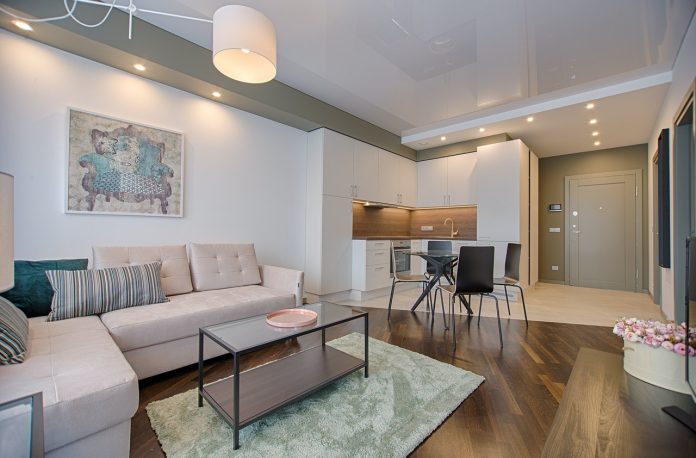00Feeling comfortable and happy inside your own home is the ultimate Feng Shui objective. Anyone, believer or not, can use its design guidelines if they seek harmony above all things in their home.
In fact, we see this discipline in some applications of color theory to create calm auras in spaces, in the orderly and non-aggressive arrangement of objects in the room, and in the use of neutral elements in specific places to not disrupt areas. Feng Shui is a design philosophy, with its rules and applications.
What Is Feng Shui?
Feng is wind, and Shui means water. It is the ancient Chinese art of harmonizing the environment to favor its individual. It is based on Chinese cosmogony and its theories on the universe’s evolution, but what does it mean for practical purposes in each person’s home?
From the perspective of decoration, interior design and architecture, Feng Shui refers to the choice of materials and colors in an appropriate arrangement to promote the harmonization of spaces and the individual there. Materials, colors, and even orientation influence the harmonization sought by this art.
In specific terms, we can say that Feng Shui helps us to:
- Use different techniques to seek tranquility in all aspects of life.
- See things from a new perspective and achieve the proposed objectives.
- To find personal peace and balance in interpersonal relationships, especially with people living in the same house.
Although some consider the art of Feng Shui as a superstition, it is a discipline based on the understanding and interpretation of the laws of nature within one’s own home. Its foundations are consistently used in interior design and decoration of the house to create harmonious environments that invite well-being.
The Concepts of Feng Shui
Despite being a lifestyle, we can think of its concepts as principles for home design. They are design guidelines with a coherence that can be applied in any property whose final idea is to create harmonized rooms.
- It is the invisible energy of objects and can be good or bad. Chi is considered good when it flows smoothly through a clean, bright and orderly space. Bad chi occurs when rooms are dark, dirty or cluttered, and in tight places or with objects placed at an angle.
- Yin and Yang. They are opposite and interdependent, representing elements that consume and generate each other: contraction and expansion, backward and forward, light and darkness.
- Theory of the five elements. Fire, water, wood, metal and earth. They are related to different aspects of nature, color, seasons, and forms. The idea is to avoid that some are imbalanced with others and that all are present in the house.
- Energy factors. These are the environmental factors that affect the interior of the house: the location, the exterior of the building, the interior of the building, and the person (their history in residence).
- Fu Xi. It is the person who watches over the well-being of the house’s inhabitants.
- Bagua map. The map used in interior design with the guidelines to introduce Feng Shui.
White Doors in Feng Shui
It is considered that the main enemies of this discipline are disorder and the indiscriminate accumulation of objects. Consequently, the inhabitants have constant stress and are distracted from their objectives. Beyond beliefs, there is a clear relationship between colors and the perception of space.
The choice of colors and their use influence the mood and sensations within the room. One of the best-known examples is the color red, which stimulates those in the place. Feng Shui has several indications to make a good color choice, depending on the room.
The connecting element between each room is the doors, the place of passage that also separates them. The peculiarity of white interior doors is that they are not as noticeable as other colors. They generate a feeling of relaxation that fits in well with any atmosphere generated in the house.
For this reason, white interior doors are often ordered and manufactured according to the tastes of the house’s inhabitants. Fábrica de Puertas EUROBLOCK is one of the companies available to get this connecting element made to measure.
The white color is associated in this discipline with purity and innocence. It is because it contains all colors while being discreet and universal. However, it should not be used on all the furniture and accessories in the house. This way, you will not interfere with the moods you want to create with the colors in each space.
While white is associated with purity, black represents abundance and wealth. The excess of one calls for the lack of the other. The pure quality of white empties that energy charge from one environment and opens the way to the climate of the next room. For this reason, white doors are often used in Feng Shui.
Find a Home-Based Business to Start-Up >>> Hundreds of Business Listings.
















































